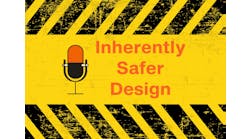How much is a human life worth? According to the 2014 edition of the National Safety Council’s (NSC) “Injury Facts,” the direct cost of a work-related death in the U.S. is about $1 million. As a rule of thumb, the indirect costs are four times the direct costs. Nowadays, such fatalities are rare.
[pullquote]
In Queen Victoria’s time, a train wreck occurred every week somewhere in the British Empire. These accidents often involved scores of fatalities. That’s why she helped put a stop to them by insisting on better standards for steel, despite steelmakers’ resistance.
In the U.S. in the 1870s, Charles Dudley, a chemist for Pennsylvania Railroad, published a study that showed steel varied dramatically in properties and quality, provoking the ire of steelmakers. He developed steel standards for the railroad and helped found the American Society for Testing and Materials.
[callToAction]
Sound standards in manufacturing often relate directly to ensuring adequate safety. That’s why you should feel relieved when you see “ANSI Z87.1-2003” on your safety glasses.
Now, I ask you to consider an issue that’s not politically correct: how do you include the cost of a work-related fatality in cost estimation? Putting a price on human life isn’t a topic your college professor discussed in public. However, it can bolster the case for investing in safety, even though your boss probably won’t welcome such a discussion. Of course, you could forego such a talk to stay in your boss’s good graces. You might not sleep well, though.
By the way, work-related injuries are expensive, too. An injury involving a trip to the hospital incurs a direct cost of $39,000, according to that NSC report. Indirect costs again are four times higher. Indirect costs assume a lawyer sues your company, and, maybe, you. Still think you can sleep tonight?
Perhaps you believe your company will protect you. Remember in “The Godfather” what Tom Hagen told Tessio when he asked for a break: “Can’t do it, Solly.” District attorneys love to prosecute companies for safety violations; employers will “sacrifice” those involved, e.g., the engineers at the Michigan Dept. of Natural Resources implicated in the Flint water cases.
Sure, you simply could dismiss the financial risk because the probability of a work-related fatality is so low: cost × probability = risk. Often, that’s true. Just remember the probability never is zero, meaning that some people lost their lives — that’s “mortuary engineering,” a phrase borrowed from aviation.
Many plants pose risks that likely require only modest spending to address. However, to gauge the cost/benefit for your project scope, you must assess the probability and risk.
Let’s consider probability. First, you must clearly divide the probability due to human behavior from the probability based on the actions of physics. Humans can be more careful or careless on a given day. Physics is ruthless: http://goo.gl/aBzlYu. If a pump is ungrounded, the probability of static electricity buildup is 100%; its discharge could result in a fatal accident.
The following are useful probabilities in assessing fatal risks: 1) falling from an elevation, 2.50×10-6 (Safe Work Australia: “Work-Related Injuries and Fatalities Involving a Fall From Height, Australia,” http://goo.gl/n01MTS); and 2) falling from a ladder, 9.00×10-7 (National Institute for Occupational Safety and Health (NIOSH)).
Useful probabilities for evaluating the risk of injury are: 1) falling from an elevation or ladder, 2.6×10-5 (the NIOSH study); and 2) chemical burns (including to eyes), 4.86×10-3 (“Chemical Related Injuries and Illnesses in U.S. Mining”).
Some would argue the risk assessment is far more complicated than what I propose. I agree. However, all the fancy matrices have failed to identify, in simple economic terms, the cost/benefit to companies and workers.
Roughly estimating such risks in budgets enables us to better understand the cost/benefit for eliminating, or at least reducing, their potential for harm. In making an assessment, generally assume that only one person is hurt and consider the total costs, including the indirect costs. That may underestimate the financial risk but at least will represent it. Let’s remove safety from the temple of the safety high priests and give it back to engineers so they can fix the problems.



